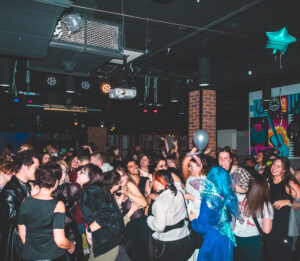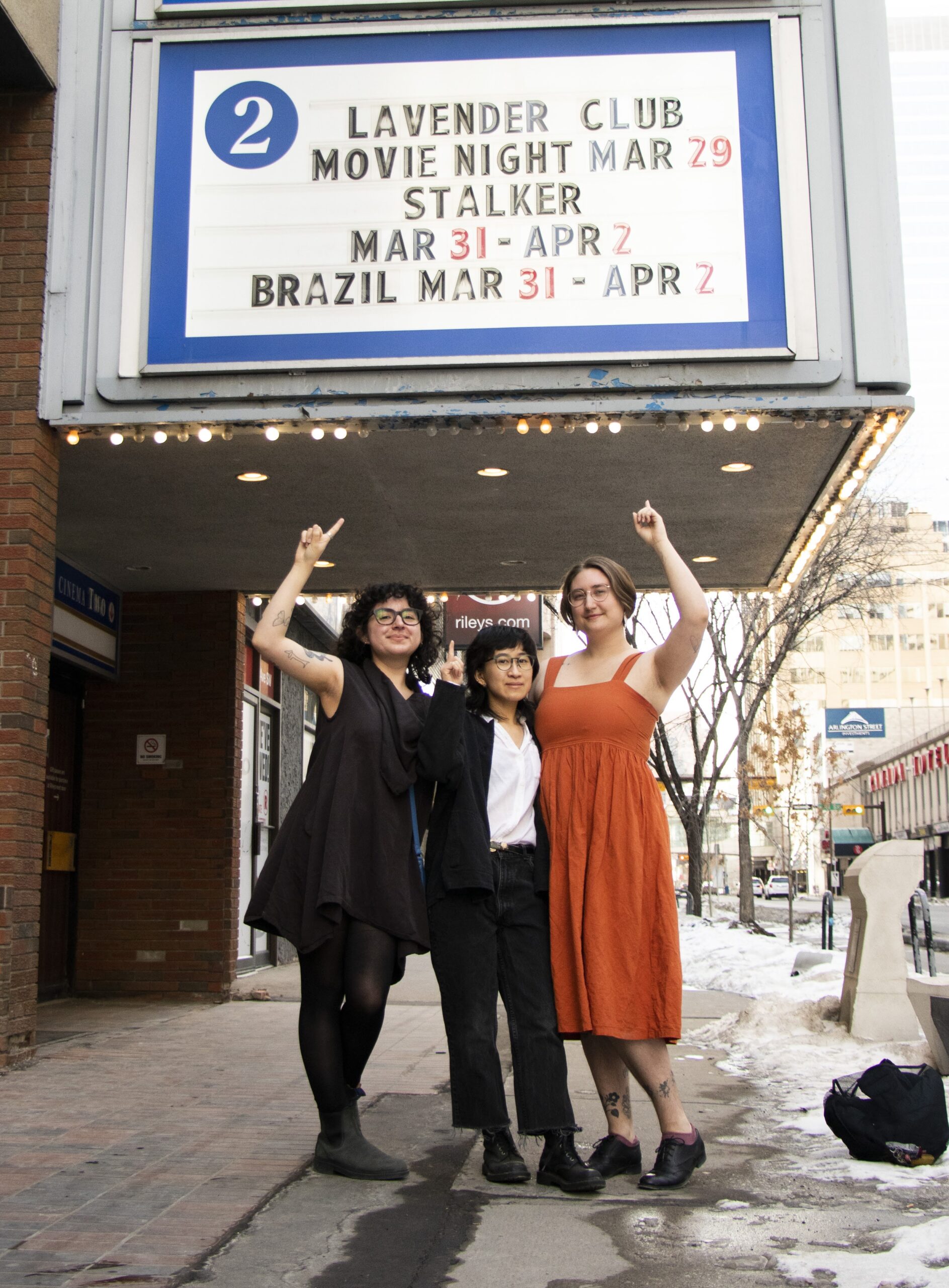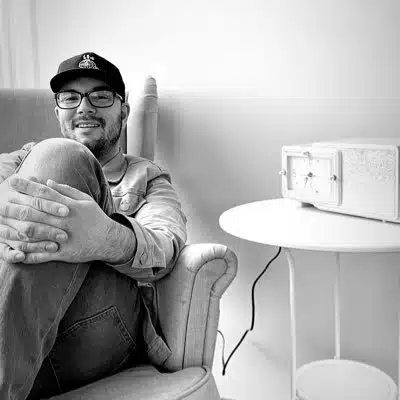On a warm August evening, queer Calgarians gather at Stanley Park Outdoor Pool for swimming, drag performances, and DJ sets. They’re attending a pop-up party hosted by Pansy Club, one of the many 2SLGBTQIA+ collectives in Calgary. For a few hours, a public pool becomes something else entirely: a dance floor, a refuge, a celebration. And then, just as quickly, it disappears.
Despite a “golden age” of gay bars in the 70s, Calgary never formally delineated an urban gay district in the same way Vancouver or Toronto did. But did one exist unofficially? And where’s the “gaybourhood” today?
Across North America, gaybourhoods have been vital sanctuaries for queer life, providing centers for political activism and a high density of safe spaces for 2SLGBTQIA+ folks. In cities like Toronto and Vancouver, Church-Wellesley and Davie Village have stood as both historical landmarks and permanent hubs for queer establishments and businesses today.
“Being around other people who are like you can make it easier to forget, for a moment, that the majority even exists,” says Dr. Amin Ghaziani, professor of sociology and the Canada Research Chair in Urban Sexualities.
Kevin Allen, author of Our Past Matters: Stories of Gay Calgary and historian behind the Calgary Gay History Project, points to the Beltline as once having an informal clustering of now-closed gay bars, coffee shops and bookstores.
“It might not have been as densely concentrated as, say, the West End in Vancouver, or Church-Wellesley in Toronto. But the Beltline, for sure, was a very gay neighbourhood, particularly in the ‘70s, ‘80s and ‘90s,” says Allen.
“If there was a gay community and all, it was probably from 4th Avenue, up to about 8th or 10th Street, straight up through 17th Avenue, and as far east as Macleod trail,” agrees Lois Szabo, one of the founders of Calgary’s first members-only gay bar, Club Carousel. Having opened its doors in the Beltline in March 1970, the club was one of the most essential gay spaces in Calgary’s history.
In 2021, the City of Calgary renamed a park “Lois Szabo Commons,” located at 936 16 Ave. S.W.. Its placement in the Beltline was specifically requested by the One Voice Chorus. Szabo calls the park’s location logical because of the area’s historical significance to the 2SLGBTQIA+ community.
Looking at Allen’s Stories of Gay Calgary, it’s clear that our queer spaces were once in close proximity to one another. The Old Y and Club Carousel were within a few doors of each other, on 12th Ave. Three blocks down, the Gay Liberation Front held meetings in rundown apartments on 1st Street and 15th Ave. Across Central Memorial Park, a bar called The Parkside Continental ran from 1973 to 1986, on 13th Avenue and 4th Street.
On the other side of what Allen calls the “golden age of gay bars”, the majority of the Beltline’s queer spaces have dissipated, and finding community looks different.
“Creating spaces of belonging in a city where queerness isn’t spatially concentrated will take the form of episodic, event-based occasions of gathering and fellowship,” says Dr. Ghaziani.
“There is a real lack of physical queer spaces in today’s Calgary, and I think there are a lot of queer people who are missing it,” Allen says. “However, there’s pop-up queer spaces in Calgary that are amazing.”
Besides the two standing gay bars — Twisted Element and the Texas Lounge — much of Calgary’s queer scene takes shape through events like Queer Calgary’s weekly arts & crafts nights and the Fairy Tales Queer Art & Film Festival’s screenings each June.
Named after private events hosted in the early 1900s, the Pansy Club has become a popular choice for pop-up queer events in Calgary, featuring everything from open mics to dance parties. The co-op hopes to eventually settle into a day-and-night permanent space. In the meantime, it relies on queer-friendly establishments like Bell’s Cafe, Loophole, and even Stanley Park Outdoor Pool to host their events.
“I was kind of tired of complaining that there was nothing to do,” says Marcello Kiglics, the founder and organizer of Generic Lesbian Party, “If I can’t see it somewhere in the community, I might as well do something about it.”
Dickens hosts Generic Lesbian Party’s pop-up parties, along with drag performances like Fake Mustache Drag Troupe’s monthly shows. Although not an explicitly gay bar, it has become a reputable landing pad for episodic queer events. “The owners, Chris and Amber [Hewitt], are wonderful people, and are always willing to support queer programming,” says Pansy Club’s worker-owner Cal Gibbens.
Despite being one of the few queer organizations in Calgary that has a permanent office, Black Pride YYC has found it difficult to adapt to rent increases while prioritizing accessible spaces for their events. President/CEO Daphne Dike-Hart often hosts pop-up events at secondary locations, like yoga sessions at Fit Point Fitness Studio or their upcoming Black Pride Festival at the Hillhurst Sunnyside Community Association on August 9.
“We’re still here,” says Bellamy Van Aalst, co-founder of Lavender Club YYC, “We may not have many permanent spaces, but we’re still gonna be here at least a few times a month.” Lavender Club has lived this promise of recurring events, regularly advertising queer markets, movie nights, and group walks on social media.
Event-based gatherings may not offer the rootedness afforded by geographically clustered gay spaces, but they can offer a similar reprieve: “Pop-up parties and events will still have a concentration of queer people, of queer culture, and of queer energy. What happens in those moments when we come together does not evaporate after the moment ends, ” says Dr. Ghaziani.
Today’s Calgarian “gaybourhood” is at once modest and sprawling. Its roads are paved by online engagement, and its street markings depend on word of mouth and social media algorithms. Most of its “houses” are ephemeral — materializing sporadically in borrowed venues. It appears in flickering glimpses: packed dance floors, pools lit after hours and movie theatres taken over. Such a gaybourhood is one where, in Ghaziani’s words, “Moments, rather than spaces, are concentrated.”



